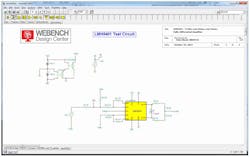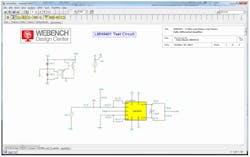SPICE It Up: Understanding and Using Op-Amp Macromodels (.PDF Download)
Modeling the performance of an analog device with SPICE is one of the standard techniques used by circuit designers to perform initial characterization and performance analysis before putting together a real-world circuit and testing it on the bench (Fig. 1). SPICE is an acronym for Simulation Program with Integrated Circuit Emphasis. It was originally developed at UC Berkeley in 1973 to verify transistor-level operation of a design before building the integrated-circuit equivalent.
1. TI’s TINA-TI SPICE program helps analog designers solve circuit problems in the virtual world (Source: TI Blog: “SPICE it up: Why I like TINA-TI (part 1)”)
As a tool for the IC designer, the first SPICE programs used detailed mathematical formulas that modeled the behavior of each individual resistor, inductor, transistor, etc. An IC designer requires a high level of accuracy to emulate the expected performance of the final design. As the IC complexity increases, so does the level of processing power needed to run the SPICE simulation.
The design group can use a powerful engineering workstation that runs for several hours to yield a precise result. Circuit designers, though, are more interested in a program that simulates the main performance characteristics of a design so that they can find and fix obvious problems. The program must also produce results in a timely manner running on a typical desktop or laptop.
SPICE Model Development: Macro and Behavioral Models
Instead of modeling individual transistors, integrated-circuit manufacturers have developed macromodels that simulate most of the performance specifications of an op amp by treating it as a black box that contains mathematical functions representing the internal functions. The SPICE macromodel implementations are simplified groupings of the individual component equations, so the macromodel runs much faster than the design-group simulation and is more robust.

